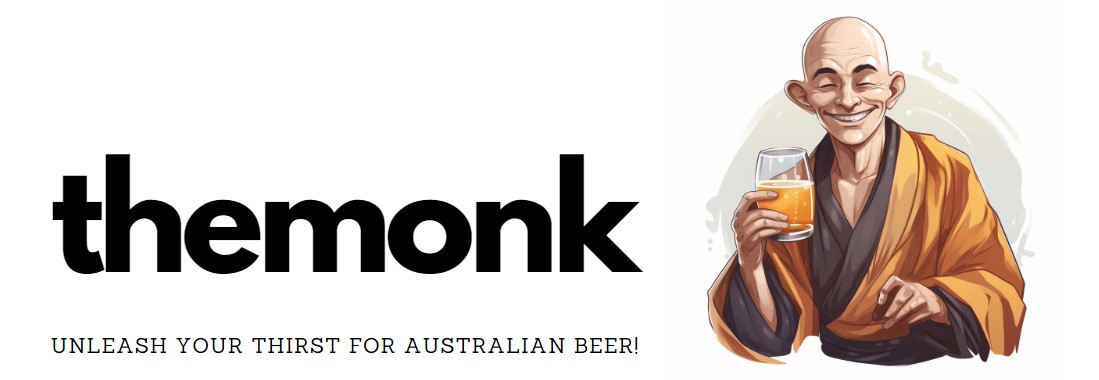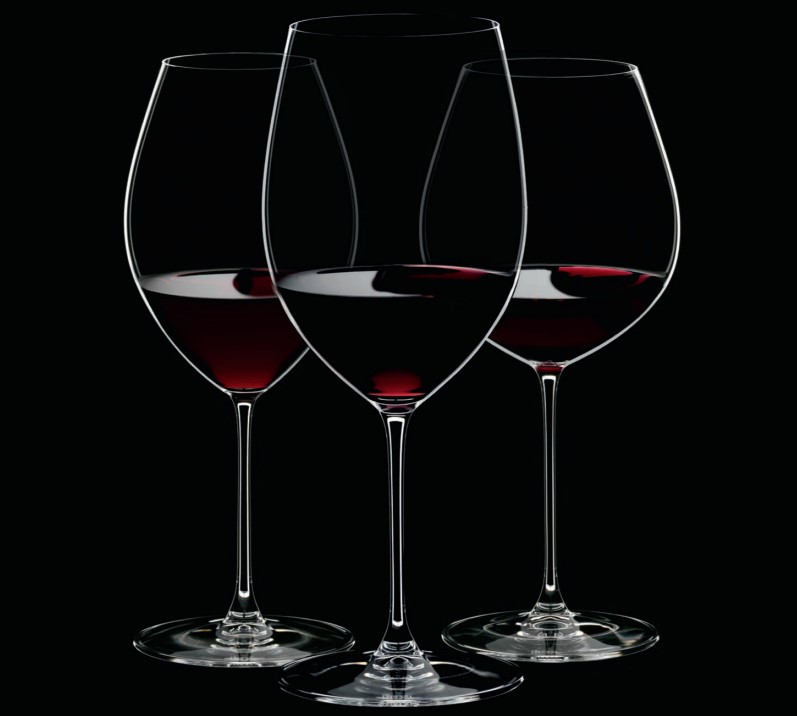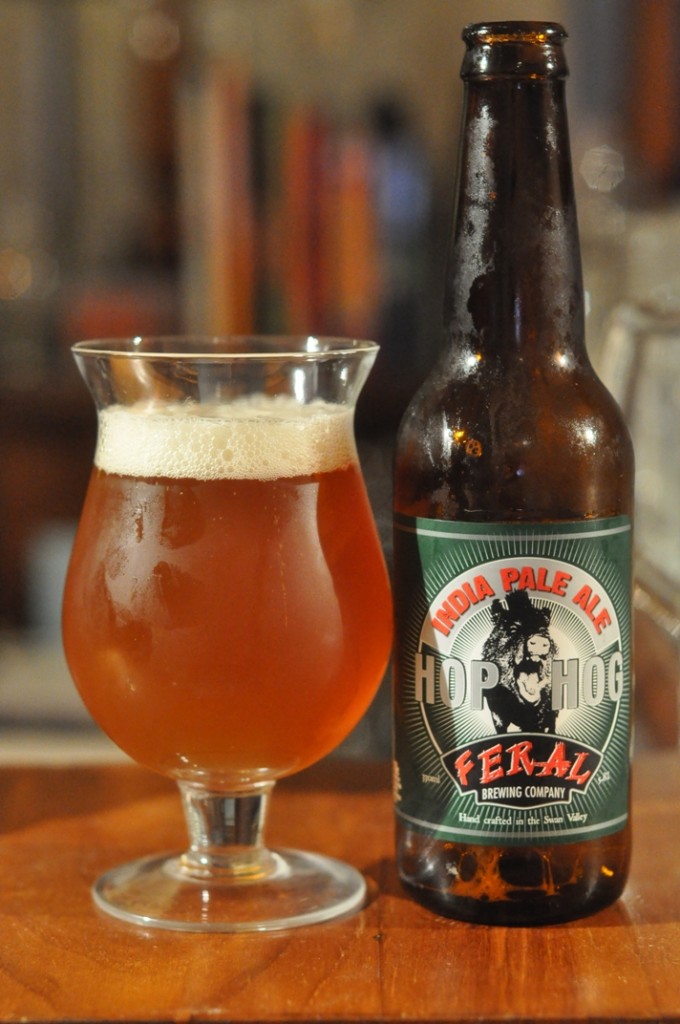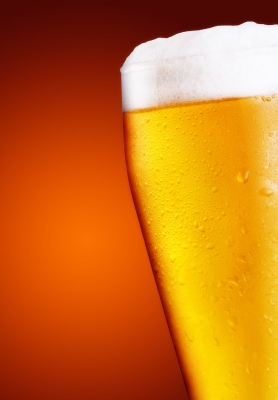Australian wine magazines are useful for keeping up with current trends, but sometimes I question their reasoning.
This is our guide on the best Australian wines coming into 2023, catergorised by wine type.
Related: Best Champagne Recommendations for 2023
Merlot
Australia hardly makes any world-class merlot on a consistent basis, but then again, who actually does?
Merlot’s well-known deficiencies, which are typically overcome in Europe by using cabernet sauvignon and cabernet franc, are usually left on full show by Australian winemakers, who as a
group display an unusual reticence to give this variety a half-decent chance with the correct blending material.
The result is the typically fresh, forward and fruity Australian merlot, however tends to lack that genuine length, structure and longevity.
The best Australian merlots currently come from Margaret River, Coonawarra and the Yarra Valley (Yarra Yering’s Carrodus 2008 was a brilliant example), while the Adelaide Hills, Eden Valley, and the King Valley occasionally show some potential.
Australia has long been hampered by a deficiency of high-class clonal material, but the next three years should see the emergence of exciting new wines from new and superior clones.
Word on the street is we’re about to see – for the first time – how good Australian merlot can be.
Merlot could, in fact, become Australia’s next hip variety.
Watch this space!
Cabernet
Staying on a related theme to Australian merlot, it’s impossible not to be impressed by the renewed confidence Australian winemakers are now showing in their ability to make cabernet in a medium to full-bodied style without sacrificing an ounce of fruit and integrity.
Much of this is possible because makers and growers now have a significantly better understanding of tannin management in fruit and wine.
Better managed vineyards are coinciding phenolic ripeness with flavour ripeness at lower sugar levels, enabling the creation of wines of more elegance and balance, less reliant on jammy fruit to balance firm extracts.
Not inappropriately, the Yarra Valley is turning out a stunning collection of these more elegant, finer cabernets from makers like Mount Mary, Wantirna Estate, Oakridge, Levantine Hill, and Yeringberg.
Several Margaret River makers like Vasse Felix and Cloudburst are also stepping carefully into the kind of more restrained territory already pioneered by classic wines from Woodlands, Brookland Valley and Voyager Estate.
Lake’s Folly, of course, has occupied this space ever since the arrival of Rodney Kempe.
It’s a wonderful development and enables wines to be less cluttered and more expressive of
terroir.
There’s also little doubt that the movement towards more restraint and elegance can be realised without any loss of longevity.
Chadonnay
No pendulum in Australian wine swings faster than Chandonnay.
Almost incredibly, I can honestly say it’s in the right place right now and that the Australian chardonnay releases over the last two years have been by some margin the finest ever, with hitherto unseen levels of elegance, balance and finely integrated winemaker-driven complexity.
For how long the pendulum will stay there is anyone’s guess, however, since the recent past shows an inexplicable willingness of Australian chardonnay makers to throw to the winds logic and any knowledge born of past experience and history.
There has been significant development in Australian chardonnay in recent years. It sees what I hope to be the end of the misguided concept that chardonnay should be almost bereft of fruit and clinically bottled without much by way of complexity and character, but with enough acidity to challenge drinkability.
Until the mid-2010s it would seem, malolactic fermentation was reduced or eliminated, while a modest amount of funkiness was encouraged.
Interestingly, the same influential group of Victorian winemakers who championed this misdirected trend are those currently most engaged in correcting it, and for that some credit is due.
I’d point to the Oakridge collection as evidence for this. These are spotlessly made and finely
balanced wines offering considerably more fruit and significantly less acidity than their preceding vintages.
Why do I point to Oakridge?
Because it has occupied a place of rare significance and influence amongst the younger group of winemakers not only in the Yarra Valley but also across south-eastern Australia.
Even when imperfect, Oakridge have shown considerable attitude.
Today the leading Australian chardonnays are engaging more elements of flavour, texture and
structure than before, while retaining an emphasis on quality and purity of fruit.
Vasse Felix’ Heytesbury is a classic example, and here Virginia Willcock is actively pursuing a leaner and slightly less fruity Margaret River expression (almost an oxymoron) by carefully selecting fruit for an earlier harvest.
Here she retains emphasis on elegance and focus by avoiding malolactic fermentation and through careful oak selection.
Following this direction, the Leeuwin Estate Art Series Chardonnay is more mineral and focused than perhaps ever before, and with the latest release shows the refinement and integration perhaps missing from earlier releases.
Another leader in the chardonnay stakes is Margaret River’s Cloudburst, whose releases to date reveal a combination of concentration and richness in wines of seamless elegance and brightness hitherto unseen in this country.
Made by Stuart Watson at Woodlands, they still have capacity for future refinement, but they’re right at the cutting edge at this moment, delivering wines that appeal immediately to those who understand high end Burgundy.
Margaret River continues to craft more high-end chardonnay than any other Australian region,
although recent vintages show it is being more hotly pursued than ever before by Tasmania, the Yarra Valley, and the Mornington Peninsula.
Marsanne/Roussanne
While these Rhône Valley white varieties are enjoying a resurgence across Australia’s better wine regions, they’re at present little more than a very interesting and worthwhile niche market.
Marsanne/Roussanne have more of a home in Victoria than elsewhere, with long associations with the Yarra Valley, Nagambie Lakes, Upper Goulburn and more recently, Beechworth.
New South Wales also has plantings in Mudgee and Murrumbateman (Canberra region).
Typically, the more established makers like Yeringberg and Tahbilk are making more restrained,
fruit-driven expressions of these grapes, while the newer arrivals to this scene like Ravensworth
and Box Grove appear more inclined to push more complex, perhaps earlier-maturing styles with more winemaker-derived artefact.
All Saints and Rutherglen Estate from northeast Victoria also make assertively oaked and more complex styles
Pinot Gris/Pinot Grigio
Darling of the lunchtime café crowd, pinot gris/grigio remains the most over-rated Australian wine.
Given its widespread presence across Australian regions, one might have expected by now rather more than the handful of genuinely honest expressions of this variety present in a very crowded market.
The Australian Wine Research Institute has introduced a PinotG Style Spectrum, to indicate on wine labels ‘whether the style of the Pinot Grigio or Pinot Gris wine is ‘crisp’ or ‘luscious’ or somewhere on a scale in-between, which apparently is to increase buyers’ confidence in selecting a Grigio or Gris wine based on their own style preference.
Quite what this has to do with wine research is one thing, but it certainly legitimises the notion that wine producers haven’t the first idea of what they are doing with this variety.
How any serious maker of a Gris or Grigio would subject their wine and their label to a formula along these lines is entirely beyond me.
Do we next create a Meursault/Puligny/Chablis scale for chardonnay?
Energised by the enthusiasm of the founders of T’gallant, the Mornington Peninsula has proclaimed itself to be the epicentre of Australian expressions of this variety.
Scorpo and Kooyong are giving this claim some credibility, but a more objective view would perhaps place that title elsewhere.
The small Tamar vineyard of Grey Sands has dropped off the pace recently, with Moorilla Estate’s Muse Series, Mountadam, Bay of Fires and Kooyong’s Beurrot taking up some of
the slack.
The Adelaide Hills is home to a large number of would-be makers of serious gris/grigio of which Pike & Joyce and Henschke (Littlehampton Vineyard) are fairly consistent, but the examples from this region are too often fat, out of shape and lacking freshness.
Seppelt appears to be on the right track with the spicy, perfumed and chalky Drumborg Vineyard (formerly Coborra) Pinot Gris from Henty, Curly Flat is evolving a very complex and appealing gris-like style, while recent vintages of the northeast Victorian labels of Pizzini, Holly’s Garden and Redbank are showing more chalkiness and varietal focus.
Riesling
Australian riesling is undergoing a similar re-invention to chardonnay.
Instead of the monochromatic – but often extremely worthwhile – offerings of yesteryear, contemporary Australian riesling can be funky, chalky, smoky, creamy, luscious, briney, mineral and even slightly sweet.
Few grape varieties reflect their site and origins more acutely than riesling. So while there has been a significant renewal of interest in the individual sites where riesling grows best, winemakers have also begun to deploy a broader suite of techniques to encourage their distinct expressions of terroir to shine through their wines.
Many of these techniques have been borrowed from European makers, especially from Alsace, Austria and Germany. Vineyards are being cropped lower and harvested earlier after careful canopy management to fix a precise balance of fruit to foliage.
Winemakers are experimenting with extended contact with primary fermentation lees, different balances between acids and sugars, and lower levels of sulphur dioxide.
Nowhere are these developments better expressed than through the extraordinary wines from
Seppelt’s Drumborg Vineyard – a spectacular individual vineyard wine cropped at almost impossibly low levels and made with a truly international riesling perspective.
Recent releases of Orlando’s Steingarten Riesling (Eden Valley) also reflect this modern spin on a traditional Australian theme, while other South Australian riesling makers in Eden Valley and Clare are allowing their wines to head along a similar path – the Polish Hill and Springvale from Grosset, the Florita from Jim Barry, KT’s Peglidis Vineyard, Tim Adams’ Reserve, Kilikanoon Mort’s Reserve and Mitchell, to name but a few.
Barrie Smith and Judi Cullam from Frankland Estate contributed massively towards this change through their biennial International Riesling Tastings, which have been the platform for a valuable interchange of ideas between riesling makers in this country and Europe.
Through its stellar collection of individual vineyard rieslings, each reflective of terroir and crafted with strong European influences, Frankland Estate has also converted its vision into reality.
Either during the recent run of hot, dry seasons until 2019 or from the fine white wine seasons
afterwards, the Eden Valley and Clare Valley continue to produce more top-class riesling than other Australian regions.
Riesling enthusiasts are also keeping a close eye on the heady, luscious and perfumed rieslings emerging from Tasmanian makers like Heemskerk, Pipers Brook and Stefano Lubiana, while regions like Henty, Canberra and the Great Southern are steadily developing a deeper and richer critical mass of quality.
With every passing vintage, more Australian wineries are either adapting their wines towards a
sweeter, more European direction, or crafting new off-dry/off-sweet styles.
A number of mainly confusing techniques are emerging on the back labels of these wines to attempt to explain how sweet or dry they actually are.
When buying riesling it’s important to be aware of this trend, and to attempt adequate due diligence to avoid disappointment!
Sauvignon Blanc/Semillon
Very few Australian vineyards are capable of making world class sauvignon blanc in the style popularised by the Marlborough region of New Zealand.
However, as long as the general public willingly buys virtually any wine labelled as sauvignon blanc with a minimum of discrimination, this small reality does not prevent them from selling out of this variety each and every year.
The Adelaide Hills remains the Australian region most able to produce the largest volume of convincing sauvignon blanc, but it’s arguable that the best and most interesting examples of this wine are actually made elsewhere.
Taut, sculpted and powdery expressions that work wonderfully with food are made by Chestnut Hill (Mount Burnett) and Cannibal Creek (Gippsland) in Victoria, while Steve Webber’s team at De Bortoli’s Yarra Valley winery are refining a chalky, mineral and briny style that ‘dumbs down’ the grape’s primary varietal character in favour of more complex and savoury aspects.
Made by the same regime, the Shelmerdine Phi label tells a similar tale.
Bay of Fires is pursuing a related course in Tasmania and while Domaine A’s strongly oaked Lady A has a history of opulence and sometimes excessive richness, the 2012 vintage explores new levels of harmony and balance.
Most of Australia’s best sauvignon blanc demands partnership with the length and freshness of
semillon.
I’m certain this is the future for high-end Australian sauvignon blanc, and it’s a recent
phenomenon.
Dave Bicknell’s savoury and mineral blends with semillon for Oakridge in the Yarra Valley (now called Fumare) marry mineral complexity with elegance and tightness.
Mount Mary, with its spectacular Triolet, has focused on its complex, white Graves style for many years.
But while some leading examples are indeed found in the Yarra Valley, the finest are typically found in Margaret River, where there is a real synergy evident between these varieties and the regional terroirs.
Semillon’s acidity and potential to produce green-edged fruitfulness ably extends the palate richness and roundness of sauvignon blanc. Today nobody is doing this better than newcomer Peccavi, whose Sauvignon Blanc Semillon is inspired by white Graves, while the establisher performer of Cape Mentelle continues to excel with its barrel fermented Wallcliffe blend.
Larry Cherubino is making great strides in this area, along with Lenton Brae and Redgate. Led by Andrew Thomas, there is a move evident within Hunter Valley circles to add a dimension
of minerality and fine chalky texture to the legendary semillons the region is rightly known for.
The finest from Tyrrell, Briar Ridge, Mistletoe and Brokenwood are showing similar qualities, while makers like Mount Pleasant, Capercaillie and Scarborough continue with their traditionally lean and focused styles.
Look for the excellent releases from 2020, which appear to give an extra dimension to this unique style.
Viognier
It takes growers and winemakers time to get the hang of new varieties, to benchmark their wines against the leading examples made around the world, and ultimately to refine their practices with mature vines at their disposal.
Australia is only halfway through this journey with viognier, which is why there are so few Australian viogniers of true excellence.
I’m old enough to remember the introduction of traminer to Australia, in whose steps viognier has almost exactly trodden.
Despite the existence of a small number of excellent traminers, the market gave up on the variety, entirely. Similarly, there are fewer and fewer viogniers released every year,
and in a Darwinian sense, only the best, and the most successfully marketed, will remain.
As we saw with traminer, most viogniers deliver a caricature-like impression of the grape’s true qualities in their youth, before ageing prematurely towards a swift and inglorious decline.
Fortunately though, there are some exceptions!
Yalumba has pioneered this grape with a range of labels including Heggies, Eden Valley and Virgilius, each sourced from the Eden Valley. Allied with its cooler climate, which tends to protect its wines from over-ripeness, the natural fine chalkiness of this region’s white wines neatly underpins viognier’s luscious, shorter presence on the palate.
While I once expected the Eden Valley to go from strength to strength with this grape, the main issue is becoming clearer with time – viognier is only ever likely to be a niche variety.
Clonakilla at Murrumbateman (Canberra region) perhaps makes Australia’s classiest and showiest viognier, while By Farr (Geelong) produces a wonderful expression of its opulent, spicy and savoury qualities, backed by profoundly meaty, reductive influences.
It’s very early days, but I also expect to see some very good examples emerge from warmer sites within the Yarra Valley, Heathcote and the Adelaide Hills. De Bortoli, Yeringberg and Vinea Marson are each moving in the right direction, with complex and savoury wines that avoid excessive fatness.
Recent vintages can show some yeast and fermentation-related problems with viognier, which appears to be more prone than other varieties to this issue.
Cabernet Sauvignon and Blends
Cabernet and its blends, for so long pinned beneath the media and market forces responsible for the resurgence of shiraz, are now being given a chance to reclaim their turf.
While cooler regions such as the Adelaide Hills, Great Southern, Coal River Valley and even the Macedon Ranges are still turning out some excellent cabernets, the last decade has simply underlined how far ahead from the rest of the pack are Margaret River (which easily produces more top-drawer cabernet than any other region), Coonawarra and the Yarra Valley.
Anyone interested in discovering Australian cabernet simply has to explore these three regions.
Right now the cutting edge of Margaret River cabernet exists somewhere between the trio of
Peccavi, Cloudburst and Woodlands.
Thanks to Wynns, Coonawarra’s re-emergence continues apace, although the declared alcoholic strengths of too many Coonawarra cabernets (which might legally be lower than actual strengths) are still the wrong side of 14%.
Challenging as it certainly is, the target maximum should be closer to 13.5%.
Wynns leads the way in Coonawarra and each year distances itself further from the local pack through an exhaustive process intended to maximise every available benefit from its unique resource of vineyard and genetic material.
The next tier down, comprising names like Redman, Leconfield, Balnaves, Hollick, Petaluma, St Hugo and Yalumba are performing well but not creating headlines. They still need to do more to shore up the region’s reputation.
The great recent cabernets from long-established Yarra Valley vineyards like Yeringberg, St Huberts, Oakridge and Mount Mary simply pose the question why aren’t there many more classic examples.
Perhaps it’s because the very trend-prone Melbourne wine trade still regards cabernet as a second-class citizen? I’m not sure.
Some outstanding cabernet continues to be grown in significantly warmer areas like the Barossa Valley and McLaren Vale, especially from recent vintages.
And just to defy most winemaking logic, Lake’s Folly continues to craft outstanding cabernet in the Lower Hunter Valley, year after year.
Pinot Noir
While hot, dry recent seasons have made life exceptionally difficult for Australia’s steadily emerging band of elite pinot noir makers, even in cooler regions, have given them the chance to shine.
These have been signature vintages across the cool climate regions of southeastern Australia, producing pinots of rare perfumed, elegance, structure and balance.
Interestingly, these cooler vintages have played into the hands of the Yarra Valley more than any other region.
Tasmania is slowly revealing the results of more mature vineyards, better-managed sites, more experienced winemakers and better seasons with a wider array of genuine quality pinot.
The next five years will be interesting if Tasmania can continue its current trajectory. Its production, however, remains tiny.
Victoria’s Yarra Valley and Mornington Peninsula remain streets ahead of other mainland pinot
regions, although the occasional Adelaide Hills example – especially from labels like Grosset, Shaw & Smith and Riposte – reveal classic varietal qualities. Brian Croser, however, is adamant that his elevated Foggy Hill site in South Australia’s Fleurieu Peninsula will join the shortlist of great Australian pinot vineyards.
Wines from Bindi, Epis and Curly Flat suggest that if more quality sites were developed there, the cooler Macedon Ranges could yet emerge as a serious contender. Recent crops however have been even more tiny than usual.
Other than its pinot noir beacon in Bass Phillip, Gippsland has broadly failed to live up to earlier expectations, although in William Downie it might yet have found a new regional champion.
Sangiovese, Barbera, Nebbiolo et al While it is still very early days in Australia, we are now seeing some maturing vineyards of better clones of these Italian varieties, and the results are extremely encouraging.
It is much too early to formally link varieties with regions, but some strong associations are beginning to emerge: sangiovese with McLaren Vale, the King Valley and Heathcote; nebbiolo with the Adelaide Hills, McLaren Vale and Heathcote; barbera with the King Valley, the Lower Hunter Valley and Mudgee.
In producers such as Coriole, (whose 2007 Vita Reserve Sangiovese was truly exceptional),
Greenstone, Pizzini, Arrivo (sadly now defunct), Vinea Marson, Castagna, Margan, Primo Estate
(with its Joseph Nebbiolo), Ravensworth, Sutton Grange and even Penfolds (whose Cellar Reserve Sangiovese is gaining real credibility), Australia now has a strong and committed core of individuals able to perform at a very high level with these varieties.
Add to this list wines like Brian Freeman’s authentically eccentric Rondinella Corvina, and it’s a story that is gaining depth and diversity with each and every vintage.
Still not satisfied by producing Australia’s finest chardonnay and shiraz, Giaconda’s Rick Kinzbrunner has jumped the queue to head the (relatively short) list of Australia’s finest makers of nebbiolo.
Jasper Hill has become a close second. Italian varieties in Australia still punch about their weight in terms of space on wine lists and in the media.
The reality is that there are still not enough wines of genuine conviction and integrity.
Shiraz
Too many Australian shiraz makers are still content to chase popularity in certain market segments instead of making the best shiraz they can.
This is a short-term approach and those taking it are flirting with danger.
I have the feeling that the world is beginning to get ready for another dose of Australian shiraz, but this time of a very different nature to the porty, overly-alcoholic and dead-fruited
examples that once propelled Australian wine onto centre stage, before quickly being dragged
straight back off again once the inadequacies of these wines became more widely apparent.
The good news, however, is that a significant number of makers – especially in McLaren Vale
and the Barossa Valley – are making wines of better balance and freshness, and wines which are actually better able to express the uniqueness and quality of their terroirs.
Let’s hope this movement, evident in earlier wines, is a sign of a change in attitude, and not just a short-term phenomenon.
The big story with Australian shiraz lies outside the regions that have received most of the publicity in recent years.
Coonawarra is well and truly back in the frame, fashioning deeply flavoured shirazes of substance and structure, but typically without heaviness or jamminess.
The region is cool enough to retain some of the more peppery characteristics associated with the grape.
Wynns Coonawarra Estate has recently added a Black Label Shiraz as well as a translucently bright V&A Lane Shiraz to its portfolio – each brilliant examples of what well-managed Coonawarra sites can deliver.
Victoria continues to redefine its shiraz map, especially for more savoury, peppery and elegant wines that are totally removed from the warmer South Australian model.
Some, like Best’s Bin ‘0’ and the deeper Thomson Family Reserve are typically tight and fine-grained but also very Australian.
Others such as the Syrahs from makers like Vinea Marson, De Bortoli Yarra Valley, Giaconda, Allies, Castagna, Yarra Yering, Jamsheed and Sutton Grange are more savoury, elegant and tightly structured in a more Francophilic way.
Some years ago I wrote that the Dardel Shiraz, made by Doug Neal from the exceptional Paradise IV site near Geelong, would become the most influential shiraz in Australia. With a raft of wines now emerging that are clearly made in this style across the entire continent, this prediction is indeed coming true, for all the right reasons.
The recent obsession of many Yarra-based winemakers with an over-reliance on stalks throughout the shiraz fermentation (with pinot noir as well in many cases), regardless of vintage conditions and lignification, appears to have stalled.
Way out west, Larry Cherubino and others like Alkoomi, Frankland Estate, Plantagenet and Castle Rock are crafting similarly elegant and savoury styles in the Great Southern, while Cape Mentelle, Peccavi and Voyager Estate are persuasively putting forward a more elegant and subtle case for Margaret River shiraz.
New South Wales has also delivered a string of excellent Hunter vintages, plus some dramatically improving wines from the Hilltops and Canberra regions.
Look for the renascent shirazes from Mount Pleasant, Tyrrell’s, Andrew Thomas and de Iulius. Clonakilla, the inspiration behind the modern Australian shiraz viognier blend, continues to fashion the country’s finest example, while its varietal Syrah is similarly impressive.
Too many makers still fall for the trap of using too much viognier in their blends with shiraz – even a single per cent can occasionally be too much – and use it poorly at that, creating red wines that virtually smell and taste like whites.
Finally, I need to express with surprise and admiration how some of the South Australian makers who persist in creating shiraz of 15% and above, are beginning to do so with better balance and integration, and without the dehydrated characters so often witnessed in wines of this level of ripeness.
In particular I mention Torbreck and Glaetzer, each of whom, in their own ways, continue to
add to the diversity of Australian shiraz.
Shiraz, Grenache and Mourvèdre
Vintage and winemaking attitude tend to determine the outcome of the traditional southern Rhône blend in Australian wine regions, especially the warmer ones like the Barossa Valley and McLaren Vale, which have long been home to these particular varieties.
However, too many makers are still electing to make higher alcohol, jammier expressions of this blend regardless of vintage conditions. Many such blends are either far too sweet, soupy and jammy, or else too wild and woolly.
More attention needs to be paid to the viticulture and the making of these wines if they are to retain the relevance they so recently acquired.
Teusner is making a fine fist of this, with drier, deeply perfumed and more savoury wines.
I believe that there is a genuine consumer-driven trend towards more elegant wines, which trade and media are generally supporting and driving. Sooner or later then, some makers will simply have to move with the times, and actually make better wines in the process.
Some of the better growers of varietal grenache in the Clarendon section of McLaren Vale (a little higher and cooler than the rest of the region) show that with some application, it can still be done.
I have never seen a better example of this than recent vintages of Romas Grenache from Clarendon Hills, while SC Pannell’s Grenache is a more pristine and fruit-focused style, an improvement even upon excellent earlier releases.
From the Barossa comes Yalumba’s Tricentenary Grenache. This is the style space where Australian grenache can be recognised amongst the finest in the world.
The Barossa is also home to a small volume of straight varietal mataro, exemplified by the supremely supple, perfumed and elegant Old Garden Mourvèdre by Hewitson and the deeply fragrant and elegant Mataro under Andrew Caillard’s self-painted label.
These are medium to full-bodied wines of genuine charm, and would actually please most drinkers of high-end pinot.
Tempranillo
The early experiences with tempranillo in Australia are extremely encouraging. Logic would suggest it is a natural fit into this country’s viticultural environment, and winemakers appear to need less time to adapt to it.
Terrific expressions of this major Spanish variety are already being made in Clare, the Barossa and McLaren Vale, while inland regions of New South Wales and Victoria might also produce great results.





Leave a Reply